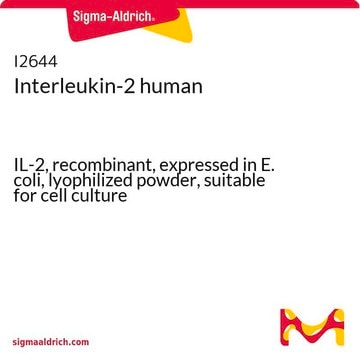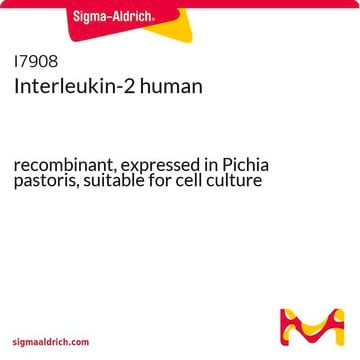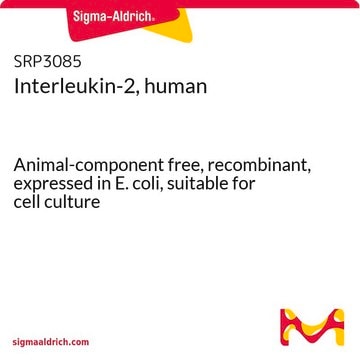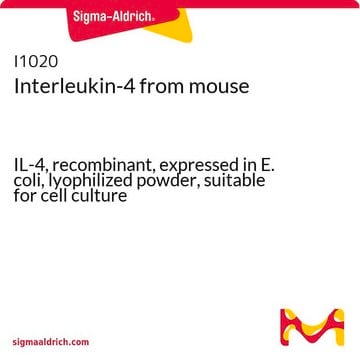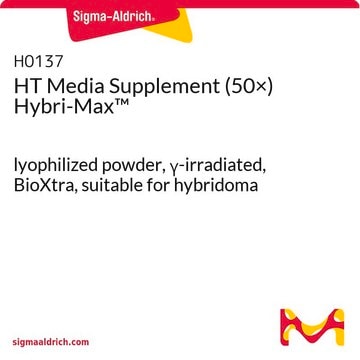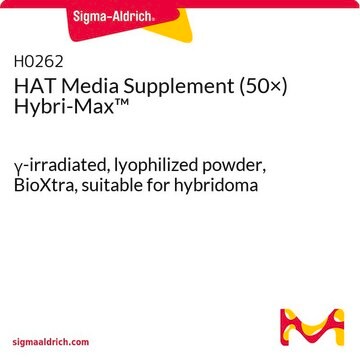11271164001
Roche
Interleukin-2, mouse (mIL-2)
recombinant (E. coli)
Sinónimos:
mIL-2, mouse interleukin-2
About This Item
Productos recomendados
biological source
mouse
Quality Level
recombinant
expressed in E. coli
assay
>95% (SDS-PAGE)
form
solution
potency
<0.5 ng/mL EC50
mol wt
17,200 Da
packaging
pkg of 10,000 U (5 μg, 1 ml)
manufacturer/tradename
Roche
storage condition
avoid repeated freeze/thaw cycles
technique(s)
inhibition assay: suitable
impurities
<0.1 EU/μgtested (LAL test)
UniProt accession no.
storage temp.
−20°C
Gene Information
mouse ... Il2(16183)
Categorías relacionadas
General description
Specificity
Application
- Supports the growth of murine CTLL cells (murine T cell line), but not that of human T-cells.
- Strongly inhibits the binding of recombinant human IL-2 to murine responder cells.
- Weakly inhibits the binding to human responder cells.
- Shares identical biological and immunological activities with human IL-2.
- Is a convenient tool for extensive studies of the pharmacological and physiological activities of IL-2 in murine models.
- used for the stimulation of murine T-cells
Quality
Sequence
Unit Definition
Preparation Note
Storage conditions (working solution): -15 to -25 °C
Note: Avoid repeated freezing and thawing.
Other Notes
Note: The biological activity of this product may vary in different in vitro applications. Determine the optimal concentration range for specific applications.
EC 50 definition/Unit definition: The amount of mIL-2 that is required to support half-maximal stimulation of cell proliferation (XTT cleavage) with CTLL-2 cells (1 unit equals =0.5 ng).
Storage Class
12 - Non Combustible Liquids
wgk_germany
nwg
flash_point_f
No data available
flash_point_c
No data available
Certificados de análisis (COA)
Busque Certificados de análisis (COA) introduciendo el número de lote del producto. Los números de lote se encuentran en la etiqueta del producto después de las palabras «Lot» o «Batch»
¿Ya tiene este producto?
Encuentre la documentación para los productos que ha comprado recientemente en la Biblioteca de documentos.
Los clientes también vieron
Nuestro equipo de científicos tiene experiencia en todas las áreas de investigación: Ciencias de la vida, Ciencia de los materiales, Síntesis química, Cromatografía, Analítica y muchas otras.
Póngase en contacto con el Servicio técnico

